21 Aug Creating Shawl Brooches with Joe Clift
[vc_row css_animation="" row_type="row" use_row_as_full_screen_section="no" type="full_width"...

[vc_row css_animation="" row_type="row" use_row_as_full_screen_section="no" type="full_width"...
[vc_row css_animation="" row_type="row" use_row_as_full_screen_section="no" type="full_width"...
[vc_row css_animation="" row_type="row" use_row_as_full_screen_section="no" type="full_width"...
[vc_row css_animation="" row_type="row" use_row_as_full_screen_section="no" type="full_width"...
We would like to extend...
My experience at the Folk...
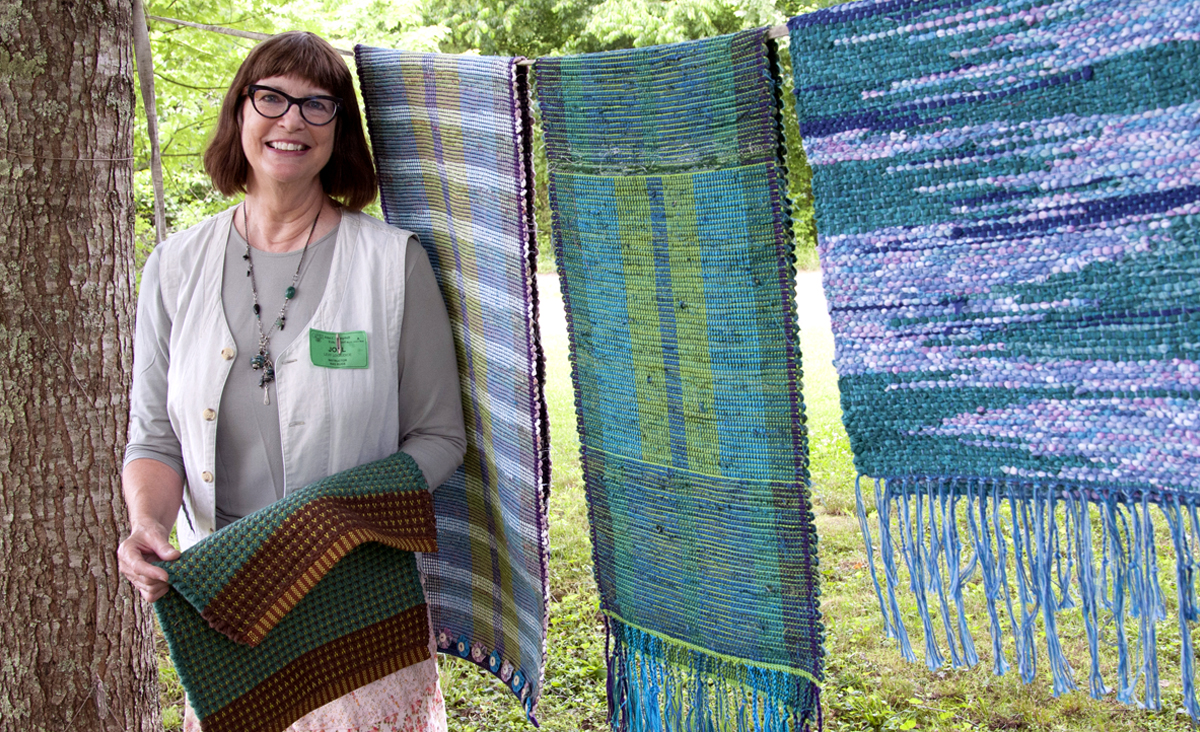 Rag rug weaving embraces the folk art tradition of using everyday, readily available materials to build aesthetically beautiful, yet functional art: textiles made from the things we have, can forage, or acquire. With the craze du jour surrounding KonMari, now is a good time to think about new options for all those clothes you may be putting into the “Thank you, goodbye” pile. Rag rug weaving might be your perfect option!
[caption id="attachment_19054" align="alignright" width="251"]
Rag rug weaving embraces the folk art tradition of using everyday, readily available materials to build aesthetically beautiful, yet functional art: textiles made from the things we have, can forage, or acquire. With the craze du jour surrounding KonMari, now is a good time to think about new options for all those clothes you may be putting into the “Thank you, goodbye” pile. Rag rug weaving might be your perfect option!
[caption id="attachment_19054" align="alignright" width="251"] A table runner made by JoEl with woven plastic bags! See a photo below of the process.[/caption]
Rag weaving a craft that always offers a student the opportunity to get in the spirit of upcycling. I recently talked with longtime Folk School instructor, JoEl Levy LoGiudice about this sustainable, functional, colorful, and beautiful type of weaving. JoEl has taught rag rug weaving, among other subjects, at the Folk School since 1987. She has two classes coming up: Fabulous Fabric Necklaces on March 27–29, 2020 and Weaving with Repurposed Materials on April 19–24. Enjoy our interview!
CP: You’ve been teaching at the Folk School for over 30 years! That’s so awesome. Do you remember the first time you came to the Folk School?
JLL: I learned about the school from a former student of mine when I taught at the Appalachian Center for Crafts. Douglas Atchley had recently moved to Brasstown to manage the craft gallery (at that time it was located in the History Center) and he thought I would enjoy teaching here. He put me in contact with Ruth, who was directing programs at that time, and the first class I taught was Appalachian Rib Baskets.
A table runner made by JoEl with woven plastic bags! See a photo below of the process.[/caption]
Rag weaving a craft that always offers a student the opportunity to get in the spirit of upcycling. I recently talked with longtime Folk School instructor, JoEl Levy LoGiudice about this sustainable, functional, colorful, and beautiful type of weaving. JoEl has taught rag rug weaving, among other subjects, at the Folk School since 1987. She has two classes coming up: Fabulous Fabric Necklaces on March 27–29, 2020 and Weaving with Repurposed Materials on April 19–24. Enjoy our interview!
CP: You’ve been teaching at the Folk School for over 30 years! That’s so awesome. Do you remember the first time you came to the Folk School?
JLL: I learned about the school from a former student of mine when I taught at the Appalachian Center for Crafts. Douglas Atchley had recently moved to Brasstown to manage the craft gallery (at that time it was located in the History Center) and he thought I would enjoy teaching here. He put me in contact with Ruth, who was directing programs at that time, and the first class I taught was Appalachian Rib Baskets.
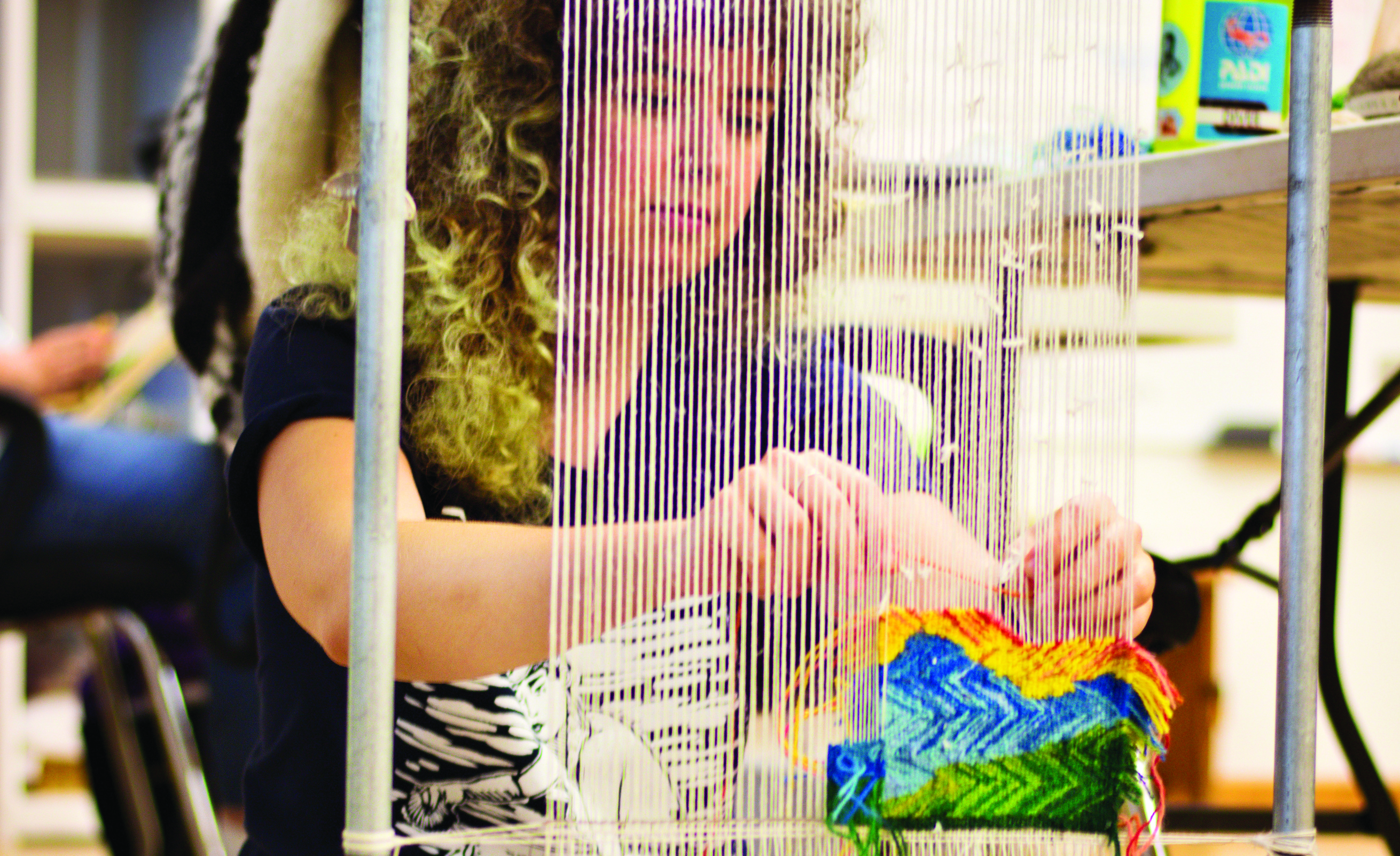
Having grown up just 12 miles down the road from Brasstown, many of Tommye Scanlin’s earliest 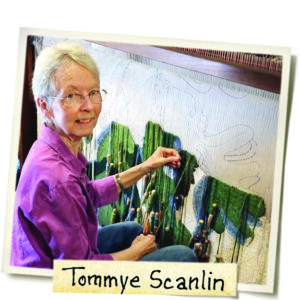 Folk School memories date back to her youth. In the mid-1960s, she and her boyfriend would often catch a glimpse of campus on their way to the drive-in movie theater in Peachtree. Since those drive-in, drive by days, Tommye’s Folk School story has come full circle.
Folk School memories date back to her youth. In the mid-1960s, she and her boyfriend would often catch a glimpse of campus on their way to the drive-in movie theater in Peachtree. Since those drive-in, drive by days, Tommye’s Folk School story has come full circle.
Tommye was officially introduced to Folk School classes by Bob Owens, a potter who also happened to be the head of the Art Department at North Georgia College where Tommye taught art and textiles. “I was learning about weaving at the time,” Tommye says, “trying very hard to figure it out on my own. In the summer of 1974, I had the chance to take a weaving class.” During her week as a student, she learned to read weaving drafts and added to her growing love of the craft. “With my newly gained knowledge, I doubled down on my weaving and within a year or so began to show and sell my woven works.”
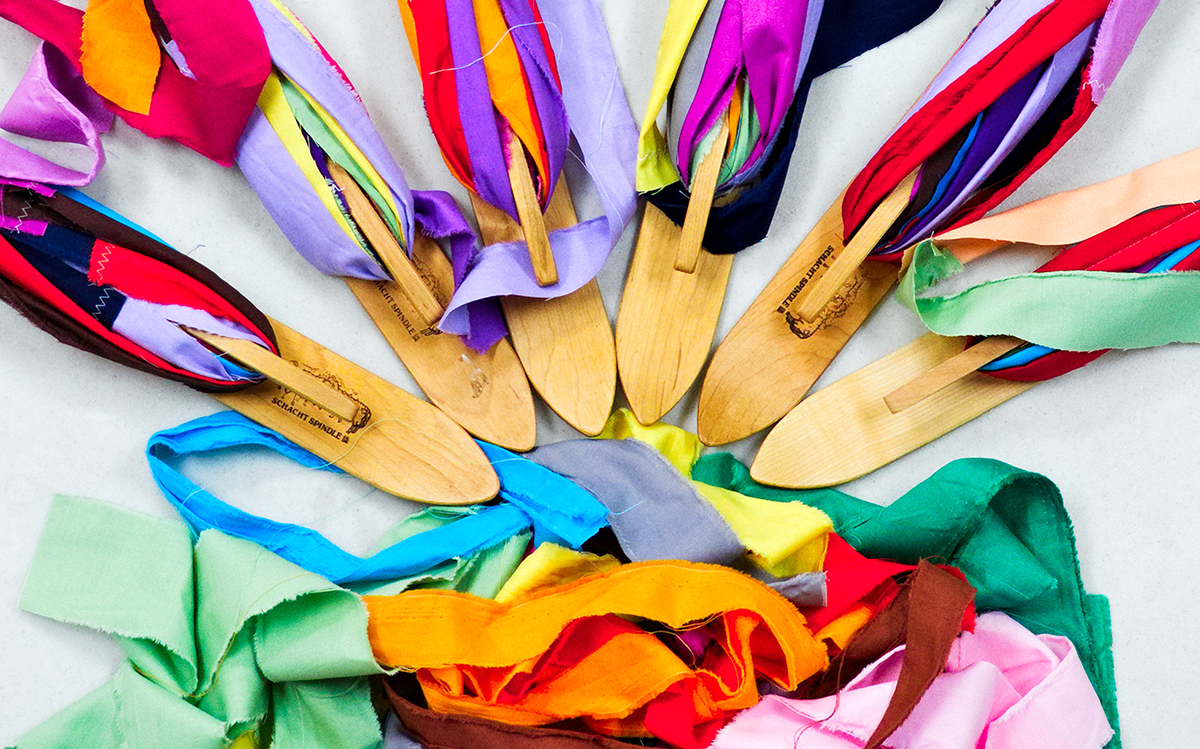 Weavers' Work Week is an annual tradition at the Folk School where skilled weavers are invited to come for a week and volunteer their time to do projects around campus and make improvements in the studio. Let's learn more about the week from Pam Howard, longtime Weaving Resident Artist.
[caption id="attachment_18687" align="alignright" width="246"]
Weavers' Work Week is an annual tradition at the Folk School where skilled weavers are invited to come for a week and volunteer their time to do projects around campus and make improvements in the studio. Let's learn more about the week from Pam Howard, longtime Weaving Resident Artist.
[caption id="attachment_18687" align="alignright" width="246"]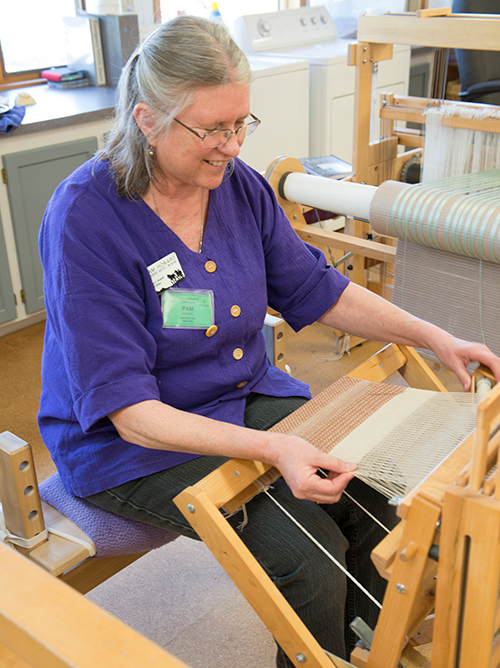 Pam Howard at the loom[/caption]
CP: What is Weavers' Work Week, and how did it start?
PH: The idea for Weavers' Work Week started in 1992. A weaving teacher, Betty Hancock Smith and her weaving student, Dee Richard were talking about how hard it was sitting all week on the loom benches. Those two got to talking about what if weavers were invited to come to the school and weave fabric to make the cushions. They asked Jan Davidson, former director and Ruth Truett, former programs director. It was approved, and in the spring of 1993 the first Weavers' Work Week happened.
I was assisting Betty in her weaving class in 1992, and I was the first weaver that was asked to participate. I have been to every one since. From 1993 to 2000, Betty was in charge of organizing the yearly event. In 2000, I became the Resident Weaver and took it over organizing it. Things went on fairly smoothly till 2008 when I had health issues and inherited relatives I had to take care of. After the dust settled and things had calmed down in my life, I thought it was time to restart the tradition of WWW. So, on February 4, 2015 I sent a letter to the “powers that be” and got Weavers' Work Week back on the schedule.
Pam Howard at the loom[/caption]
CP: What is Weavers' Work Week, and how did it start?
PH: The idea for Weavers' Work Week started in 1992. A weaving teacher, Betty Hancock Smith and her weaving student, Dee Richard were talking about how hard it was sitting all week on the loom benches. Those two got to talking about what if weavers were invited to come to the school and weave fabric to make the cushions. They asked Jan Davidson, former director and Ruth Truett, former programs director. It was approved, and in the spring of 1993 the first Weavers' Work Week happened.
I was assisting Betty in her weaving class in 1992, and I was the first weaver that was asked to participate. I have been to every one since. From 1993 to 2000, Betty was in charge of organizing the yearly event. In 2000, I became the Resident Weaver and took it over organizing it. Things went on fairly smoothly till 2008 when I had health issues and inherited relatives I had to take care of. After the dust settled and things had calmed down in my life, I thought it was time to restart the tradition of WWW. So, on February 4, 2015 I sent a letter to the “powers that be” and got Weavers' Work Week back on the schedule.
When Janet Davis recently volunteered...


